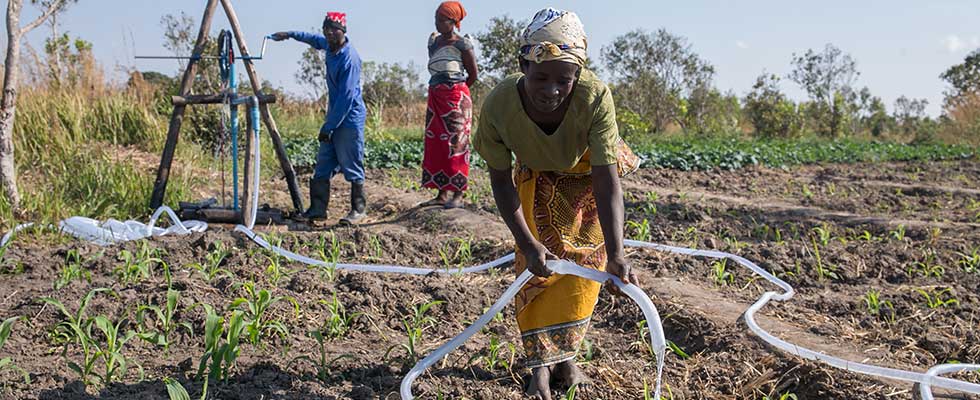
Access to safe drinking water, sanitation and hygiene (WASH) services is essential to human life. According to the World Health Organization, as of 2020, 2 billion people did not have access to safe drinking water, 1.7 billion did not have access to basic sanitation services and 3.6 billion did not have safe sanitation services. To achieve universal coverage of basic water and sanitation services by 2030, current rates of progress need to double; to achieve safely managed services, the rates need to quadruple.
We looked into several clean water organizations—neverthirst, WaterAid, Pump Aid, Design Outreach, WATERisLIFE and Planet Water—to find out the types of pumping technology they use to bring water access to rural communities to help cut down on those numbers.
Hand Pumps
Hand pumps are the most widely used solution to increase access to water in communities around the globe. These manually operated positive displacement pumps have reciprocating pistons and plungers. When the handle of the pump is raised and lowered, it causes the piston to rise, closes the piston valve and creates a vacuum that draws water into the cylinder through a foot valve that opens. When the piston moves back down, the foot valve closes to prevent any backflow. Standard hand pumps can pull water from as deep down as 45 meters (m), depending on the type being used. However, Design Outreach has created their own version of a hand pump that can pull water from as deep as 150 m.

Rope Pump Wells
Rope pump wells are a low-cost solution popular at the community level, as well as the household level, due to their affordability. They can produce more water than a hand pump, but are typically only used where groundwater is easily accessible—no deeper than 25 m. These systems work by inserting a rope with pistons down into a main and looping it back around and securing it with a knot to create a pulley that will then be attached to the wheel of the rope pump. When the wheel is turned, the pulley will bring up water trapped in the pistons.
Solar Powered Water Pumps
In certain areas, groundwater is deeper than a hand pump can reach. Some organizations, like neverthirst and WATERisLIFE, have implemented solutions to this problem. In a case such as this, their teams will have a submersible pump installed that lifts water up to the surface that is powered by solar panels.
Gravity-Fed Systems
Communities living near rivers or springs may implement gravity-fed water systems. This option involves engineers surveying the area and designing a pipework plan that will allow gravity to carry water from the water source, down to tap stands and households. Valves and pipe fittings help manage the water flow. Planet Water uses a gravity-based system to bring water towers to rural schools and communities. They have a three-stage filtration process that uses ultrafiltration hollow fiber membrane technology and activated carbon to remove pathogens and provide clean, safe drinking water.
Maintenance
Community pumps can face a lot of wear and tear due to high usage. So, how are pumps maintained after an organization has installed them?
WaterAid, neverthirst and Planet Water work with local members of the community to train them on how to deal with common maintenance and repair needs. Basic training helps the community know when to contact a local contractor for more serious issues.
Jason Berry, chief strategy officer for neverthirst, said their partners provide water committee’s with spare parts for common issues, connect them with networks who specialize in repairing water points for larger issues and ensure licensed suppliers are available for repair/replacement for pump systems.
Navpreet Juty, program funding officer for Pump Aid, said their organization works with local entrepreneurs in the community to train them to build businesses as pump mechanics who can do regular repairs and maintenance to keep pumps up and running.
“We work with local Waterpoint Committees to train them on administration of pumps and managing user fees, but we look to move beyond relying on volunteerism of committees to undertake the work themselves, as they should be customers of a service rather than providers,” she said. “By professionalizing maintenance service, we can deliver efficiencies and maintain high levels of pump functionality (over 95%).”

